
 Children no longer obey their parents and the end of the world is evidently approaching. So said a clay tablet inscribed almost 5 thousand years ago. But the world still stands, although we do go through golden and dark ages and societies rise and fall. Technology's golden age is now, or so we hope. How are current generations influenced by it and how will they shape the future world? ...
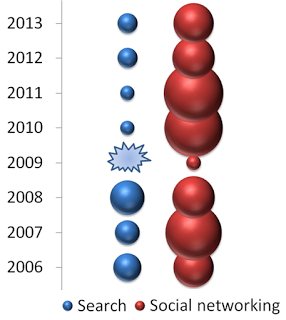 In the year 2006 'google' was officially declared a verb in Oxford Dictionary and Merriam Webster. But startups have not given up on building search engines. That same year Facebook opened its doors to users over the age of 13, preparing for exponential growth spurt. The list of startups working on yet another social network and lining up to present their sites at Silicon Valley New Tech Meetup kept growing too. And so were the crowds attending the meetups - as everybody wanted to see the next Google or Facebook. Or get a free pizza. In 2009, it looked like both search and social bubbles were bursting. At least judging by the pitches and taglines. Favorite startup words now were mobile, twitter and monetization. 2009 was, indeed, the year of mobile, twitter... and ponzi schemes. It was the year when Waze Mobile launched internationally and Tumblr released their iPhone app. 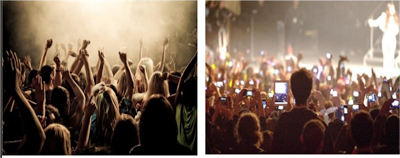 But the Social Digital Era has only just begun. Web was still ripe for more social experience and new startups were fighting for the audience, and fighting against the audience fatigue. The question was whether they could build a business off that audience or whether that audience will be worth an acquisition by the likes of Google or Yahoo. 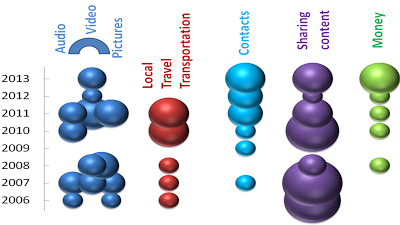 The common uses of social networking are promotion (personal or business-related), learning and entertainment. Text was the starting point for broadcasting and marketing ourselves via the Internet. Technologies were evolving and, as shown in the graph below, so were audio- and visual features of social networks, until they merged into video and movie-sharing capabilities. GPS-enabled smartphones gave rise to location-based services and networks focused on "local" - places, rideshares and travel information. Networks could serve as a self-updating address book and their purpose was shifting from keeping in touch with old friends to finding new ones, increasingly focusing on finding business partners and opportunities. Startups were transitioning from virtual worlds to virtual goods, becoming less interested in just chatting vs learning something useful, and more interested in handling money - from social lending, to fundraising and "helping retailers to serve us better". What's next? Despite the challenging funding climate, Silicon Valley startups will keep trying new things, mixing and matching new needs and technologies. After all, such combinations provide endless choices, and the possibilities are endless. 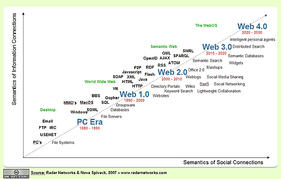 What is Health 4.0? To answer this question, let’s take a look at the evolution of World Wide Web. 1st Generation Web, a.k.a internet before the bursting of the dot-com bubble, was a dial-up, 50K bandwidth, built around fixed content, with static pages and framesets providing one-way web of information. Web 2.0 – first used in January 1999 by Darcy DiNucci and popularized in 2004is is "an average 1 megabit of bandwidth" – according to Netflix’ Reed Hastings. 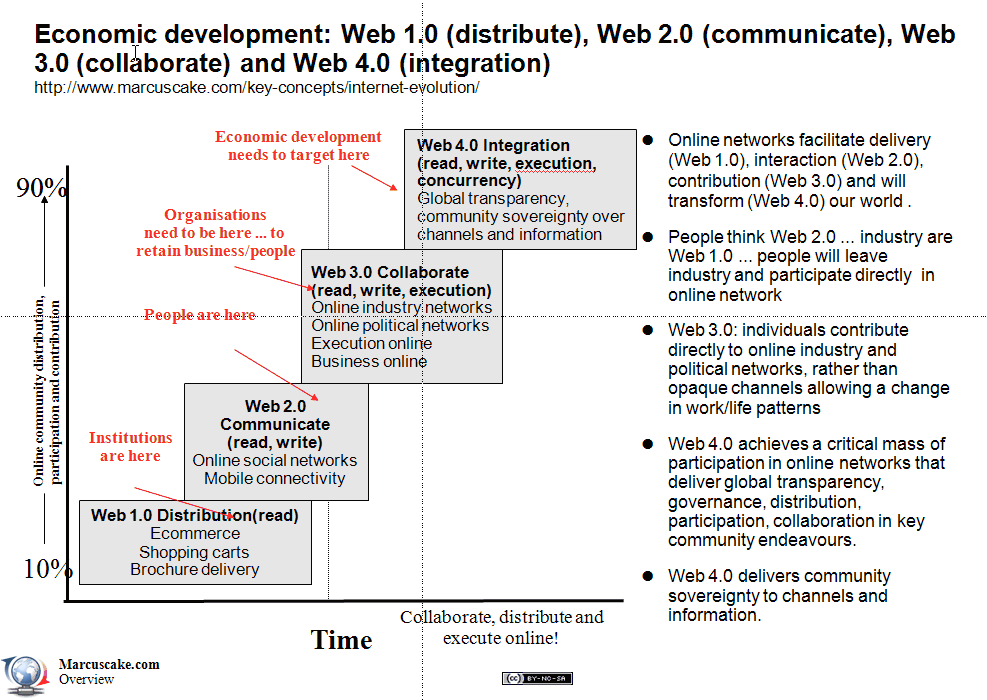 Everybody has a slightly different vision of generations 2.0, 3.0 and beyond. In a nutshell:
According to by Tim O'Reilly', in the Web Squared everything and everyone in the world casts an "information shadow," an aura of data which, when captured and processed intelligently, offers extraordinary opportunity and mind bending implications. Web 3.0 will be some sort of virtual reality. If 1990-2004 was the match being struck; 2005-2009 was the fuse; and 2010 will be the explosion. Web 1.0 Web 2.0 DoubleClick---------->Google AdSense Ofoto------------------->Flickr Akamai----------------->BitTorrent mp3.com-------------->Napster Britannica Online-->Wikipedia Personal Websites-->blogging evite------------>upcoming.org and EVDB Domain Name Speculation-->Search Engine Optimization page views------>cost per click screen scraping--->web services publishing--------------->participation content management systems-->wikis directories (taxonomy)--->tagging ("folksonomy") stickiness--------->syndication 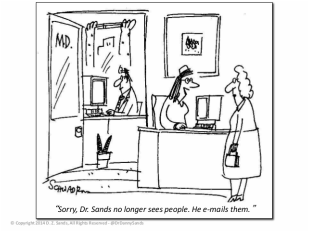 We are now at the fork of Web 2.0 and Web 3.0, focusing on the usability for humans and on internet architectures for machines. Some call web 3.0 a 3D game-environment web or a semantic web. Semantic Web was envisioned byTim Berners-Lee as a universal medium for data, information, and knowledge exchange easily understood by computers. Semantic technologies are already out there - examples are TrueKnowledge, Zemanta, NewsSift, WolframAlpha, NextBio. And there are many more " next generation" technologies and concepts - for example, Entrepreneur 2.0, Women 2.0, DNA Sequencing Technologies 3.0… Business models for health care are also evolving - from solution shops to facilitated networks, transforming the organization of health care delivery. So, what is Health 4.0? Here is Jen McCabe's opinion:
Blog of a non-for profit hospital chain CHW gives the following definitions:
But consumer owned healthcare’ isn’t quite here yet, even though number of US Health 2.0 consumers is at 60 million. 10 million adults use their cell phones and PDA/smartphones to look up health and medical information, and “a growing number of patients are rating prescription drugs and treatments on sites likeiGuard.org, DailyStrength.org, PatientsLikeMe, and WebMD.” See the top health web apps, the trends to watch in health 2.0, the latest industry stats and Health 2.0 updates by ReadWriteWeb. Long Live Health 2.0! Welcome first concepts of Health 3.0! And let’s start planning generation 4. |
Categories
All
Environment
|

 RSS Feed
RSS Feed
